One of the reasons I went to Dublin was to undertake a Joycean pilgrimage and one of the places high on my list to visit was the Martello Tower in Sandy Cove. James Joyce lived there for a total of six days between the 9th and 15th of September 1904 and yet, for anyone who is interested in Joyce, the tower is almost mythological. The wonderful opening scene of Ulysses occurs in the Martello Tower at Sandycove when ‘Stately plump Buck Mulligan’ takes his morning shave on the parapet at the top of the tower.
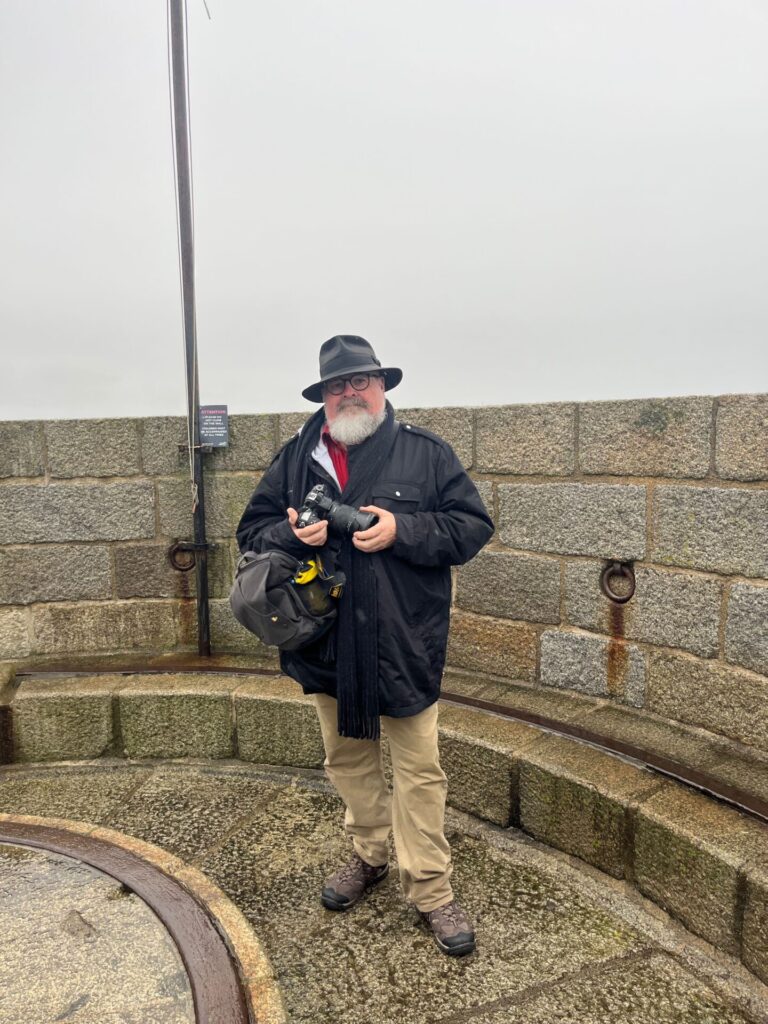
It’s an easy trip to Sandycove from the centre of Dublin. We took the DART (Dublin Area Rapid Transport) train from Connolly Station down to the Sandycove & Glasthule station and then walked along the length of Scotsmans Bay to reach the tower on the south end of the bay. It was a day that was probably typically Irish with soft rain falling from time to time and we were rugged up against the cold. At the southern end of the bay at the foot of the hill where the tower is located was a small park and a sandy swimming beach called Sandycove Beach. Despite the temperature being around four degrees there were people getting ready to jump in for a dip.

Martello Towers were built all around the former British Empire with most of them built during the early years of the nineteenth century as a defence against the French. The last tower built by the Empire was in 1841 in Sydney Harbour as part of Fort Dennison and is a well-known landmark on Sydney Harbour. Around Dublin Bay, there was a chain of twenty six towers all in line of sight of each other so that each tower could signal its neighbours in the event of the sighting of an enemy warship. There are very few remaining towers. Each tower was solidly built and the round shape help deflect cannon balls fired at it. The towers were around forty feet high and the walls were at least eight feet thick. There was a basement level that contained a foot store and a water tank that collected rain water. On the next level there was a powder store and ammunition stores and then, on the next level, there were the officer and men’s quarters and finally, on the roof was the gun platform for the cannon. You can read more about Martello Towers here.
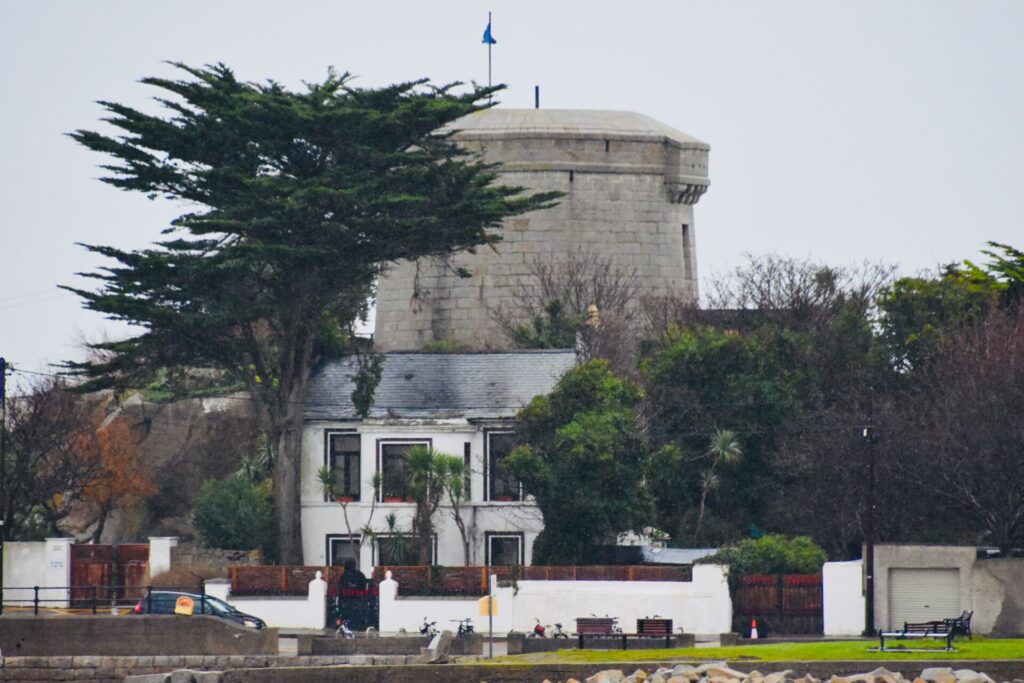
The tower at Sandycove is now the James Joyce Tower Museum. The ground floor museum room contains a wide range of Joycean artefacts, copies of various editions of Ulysses, clothing, Joyce’s guitar, waistcoat and walking stick and even his death mask. The upper floor, the living quarters have been set up with furniture and other domestic items to represent how it might have been at the time Joyce lived there with Oliver St John Gogarty, his friend and the model for Buck Mulligan along with the Englishman, Samuel Chenevix Trench, who was the model for Haines. There is even a black panther near the fireplace, in a nod to an episode in Ulysses.
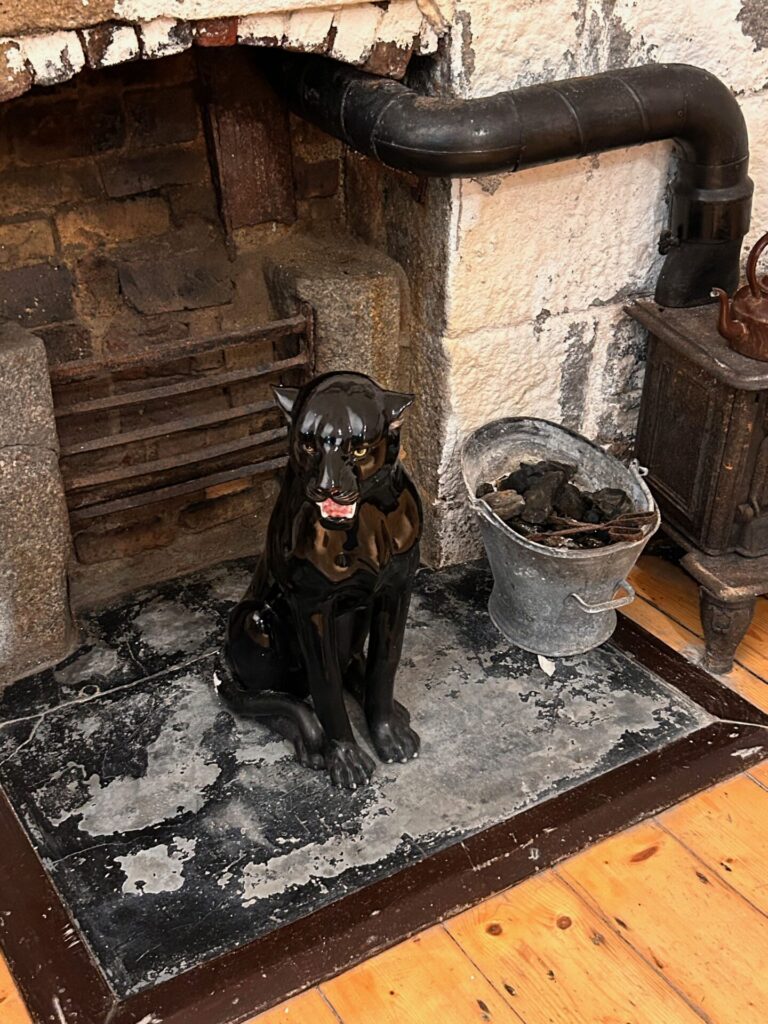
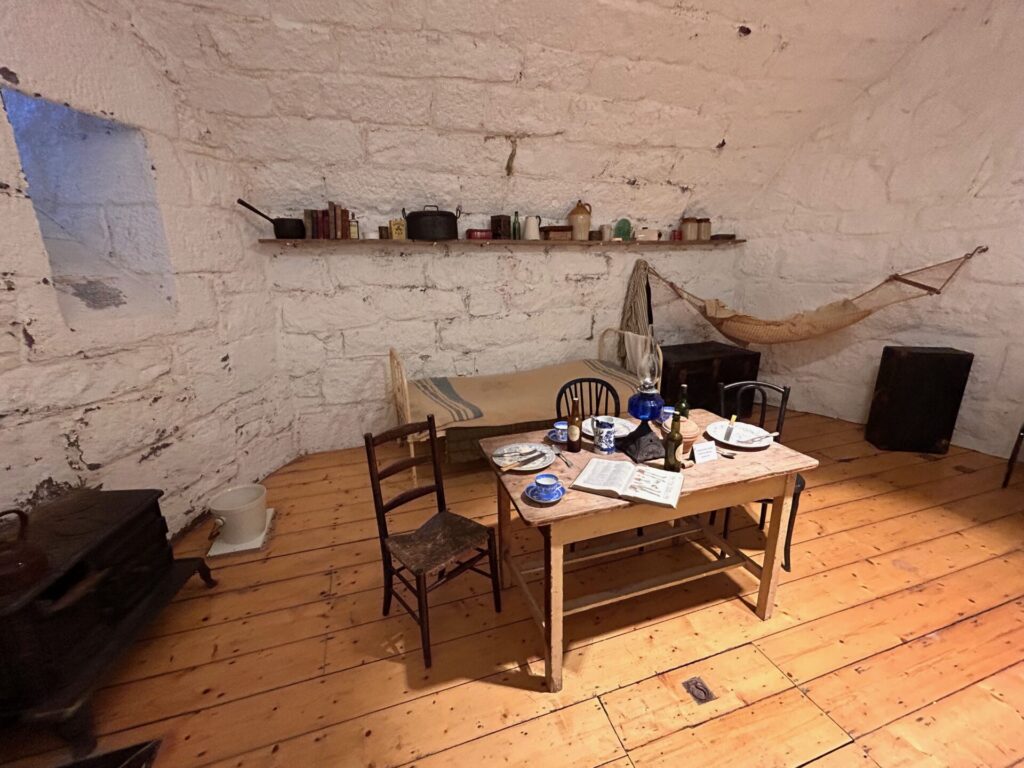
The tower is run by volunteers and the guide we had was informative and entertaining. The tour is cleverly pitched so that people who have not read Joyce, particularly Ulysses, will still get something out of their visit with lots of interesting little facts and stories.
I first tried to read Ulysses when I was still in High School and had trouble making hide nor hair of it and gave up a short way into the book and it then sat on my shelves gathering dust for a few years. I think I had a second crack in my mid-twenties while I was an Arts student majoring in English and thinking I could probably do the book justice but gave up again, perhaps fifty or sixty pages in and having little clue as to what was going on. I finally managed to read the whole book in my early fifties and still believe that I didn’t get a lot of the references and allusions. I now have four volumes of Ulysses on my book shelves: The first copy I bought when I was still at school which was a 1977 reprint of the 1936 Bodley Head edition; the 2000 Penguin edition with the introduction by Declan Kiberd; the centenary Penguin hard copy edition (this was purchased from Shakespeare and Co in Paris and has a Shakespeare and Co stamp on the flyleaf; and finally, the 2022 Cambridge Centenary Edition which is a huge book, a hardcover of nearly one thousand pages which is a facsimile of the 1922 Shakespeare and Co edition with a number of essays and explanatory notations.

There are many places in Dublin that form part of the James Joyce story. Houses where he lived that are still in existence, the pub where Nora Barnacle worked when she and Joyce first met near Trinity College, the pubs visited by Leopold Bloom on his famous walk and the Sandymount Strand, scene of the controversial masturbation scene. On my first morning in Dublin, as the grey sky started to lighten and as I could hear the sound of seagulls, a sound I will always associate with Dublin, my first thoughts were that, at last, I am in the city of Joyce, and what a delight that was.
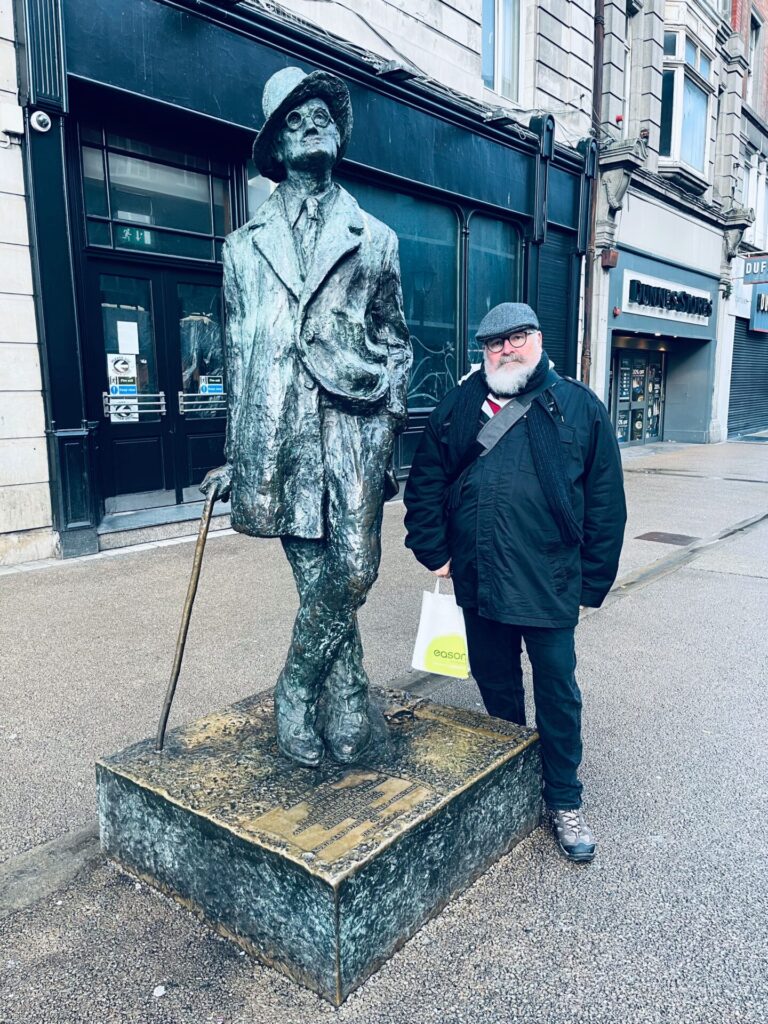

You just make me want to travel with you, read books and drink whisky whilst sitting in booths by the window in wood panelled pubs.
Now, that sounds like a lovely thing to do. I sometimes think my heart belongs in the Northern Hemisphere – I always feel so much at home there.